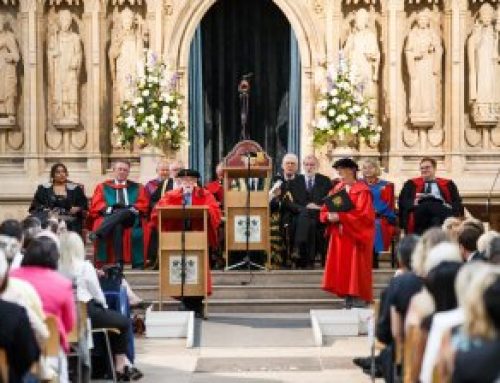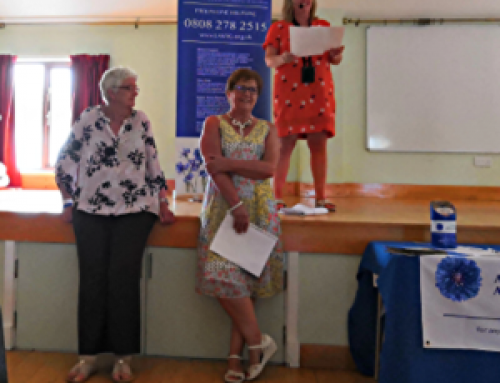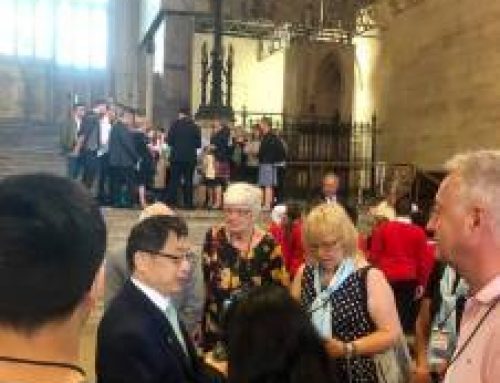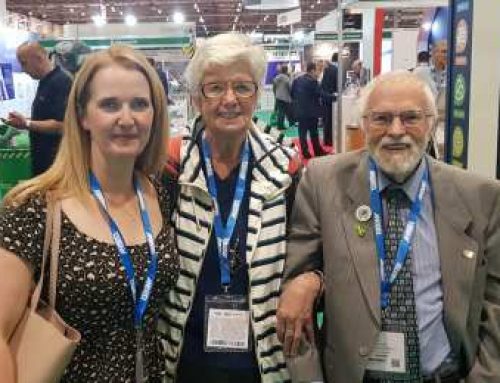
It has been a very interesting day today as I had a very special invite to Brunel Uni from two lovely Women, Lorna Anguiliano and Lesley Hanna, I met at the Conference I went to FAAM/BOHs In Westminster
So We got up so early as it’s a long journey to Uxbridge especially in rush hour. I don’t know how people do that made rush in the underground everyday. It is scary trying to get down a very crowded stairway at Victoria but we did and had 2 changes. We arrived and got a taxi to this huge site that even the taxi driver got lost.
We were greeted by Lesley, Prof Ian Boyd and Dr Ashley Hawkins.
A cup of coffee, introductions and a tour around the lab.
I have watched a demonstration of the process of analysing and counting Asbestos fibres with an atomic spectro microscope.Using this technic you can prove the presence of absence of Asbestos contaminate that can not be seen using the usual equipment.

We looked at asbestos fibres that they were saying were 0.07 of a micron all so very scientific.
Here we are looking at 1 fibre that has split and has many smaller fibres. The Technic is called Scanning Electron Microscopy. When All different Companies have a survey and the surveyors send in samples for testing.
We discussed everything, all about my story and all about asbestos in schools just a wonderful scientific day we both really did enjoyed.
We said our goodbyes and as Ashley drove is back to the Station we say the Mary Seacole building.

The Mary Seacole building offers students a range of modern facilities including a gym, resource rooms, practice rooms with a range of training aids, specialist laboratories with modern learning equipment, an art room, keep-living suite, observation rooms, facilities for PhD researchers, and work rehabilitation rooms. The building is home to students and staff from the College of Health and Life Sciences. The design of the building helps occupants keep cool. A night purge system lets automated windows open to release heat trapped during the day, helping to cool the building without the use of conventional air conditioning. This system is used in several buildings across campus. Night-time cooling, or night-time purging uses the thermal mass of a building to absorb heat gains during the day, then cools the mass at night using external air and discharging accumulated heat to the outside so the temperature of the thermal mass is lowered ready for the next day. In Mary Seacole this reduces internal temperature rises during the day by around 3 to 6°C.
http://www.brunel.ac.uk/greentrail/innovation/Mary-Seacole
All the buildings are named after famous people we had to go to the Bragg Building.
Stephen Bragg delighted in solid structures: Rolls-Royce jet engines, the Blue Streak rocket, and the railways that were his passion. He will be best remembered, however, for the bridge he built between the worlds of industry and academia.
As vice-chancellor of Brunel University for a decade, Bragg did his utmost to forge links between the two sectors. Later, when he became director of the Cambridge Industrial Cooperation Unit, he led projects to identify industrial problems and find the relevant academics to help to solve them.
His interest in engineering began early — on holiday with his family as a toddler, his love of trains was such that his nursemaid bought him a notebook and began recording the names and numbers of the passing locomotives. As soon as he could read he took on the task of recording them himself. Years later, he was delighted when his 60th birthday present from his wife was a lesson in driving a steam engine, which involved firing up the boiler ready for the trip.
Stephen Lawrence Bragg was born in 1923. His father and grandfather, William Lawrence Bragg and William Henry Bragg, shared the Nobel Prize for Physics in 1915 for pioneering work in X-ray crystallography, a method of determining the atomic structure of crystals which is still used in many fields of science.
He was proud of his family’s history and took a First in Mechanical Tripos at Cambridge, before his first brief spell at Rolls-Royce working on gas turbines. He rejoined the company in 1951 after a period in America — where he won a MSc from the Massachusetts Institute of Technology (MIT) — and in 1956 was working on the Blue Streak rocket, designed as the launch vehicle for Britain’s medium range ballistic missile. With his wife Maureen (née Roberts) he had three sons: Nigel, the principal network architect with Ciena, a global telecommunications network company; Charles, the research and development director for Procter & Gamble; and Andrew, the chief executive of the Association for Project Management.
https://www.thetimes.co.uk/article/stephen-bragg-29h0s9r5wm8
A foot note added by Lesley — To add a little background to what Mavis sent, the Experimental Techniques Centre (ETC) at Brunel University London is accredited by UKAS for asbestos evaluation by scanning and transmission electron microscopy. That allows us to image asbestos fibres with a nanometre-scale resolution and identify the type of fibre present by looking at the x-ray signature. The techniques we use have some significant advantages over the standard Polarised Light Microscopy method for asbestos detection, but they require more time and effort and our instruments are high capital cost and are not portable. We get some commercial income from evaluating samples on behalf of our customers, but as a university we are also very interested in engaging with other aspects of asbestos detection and investigation.







Leave A Comment